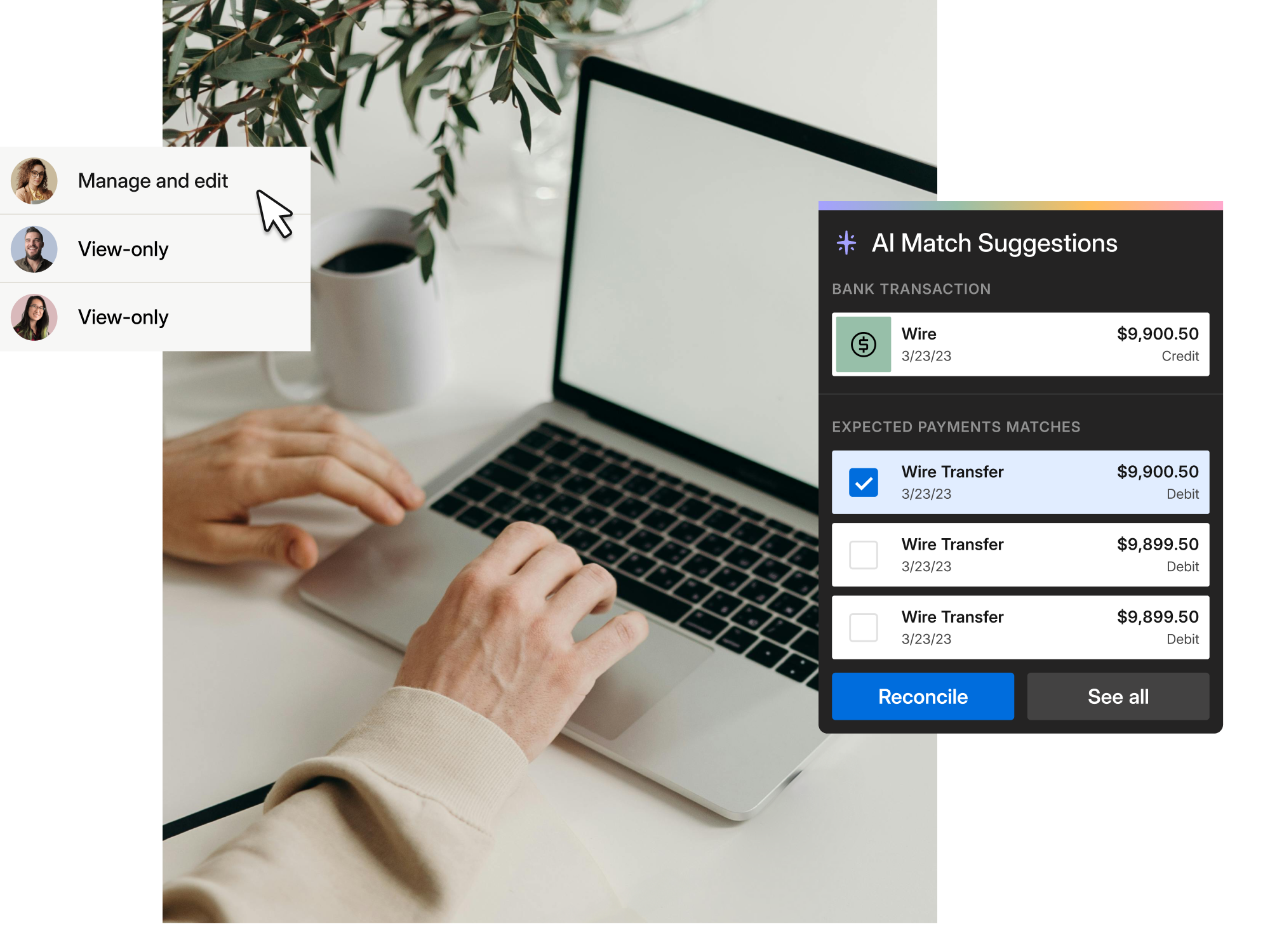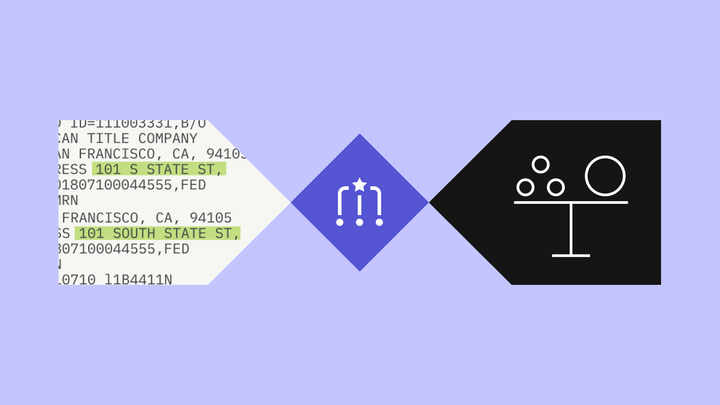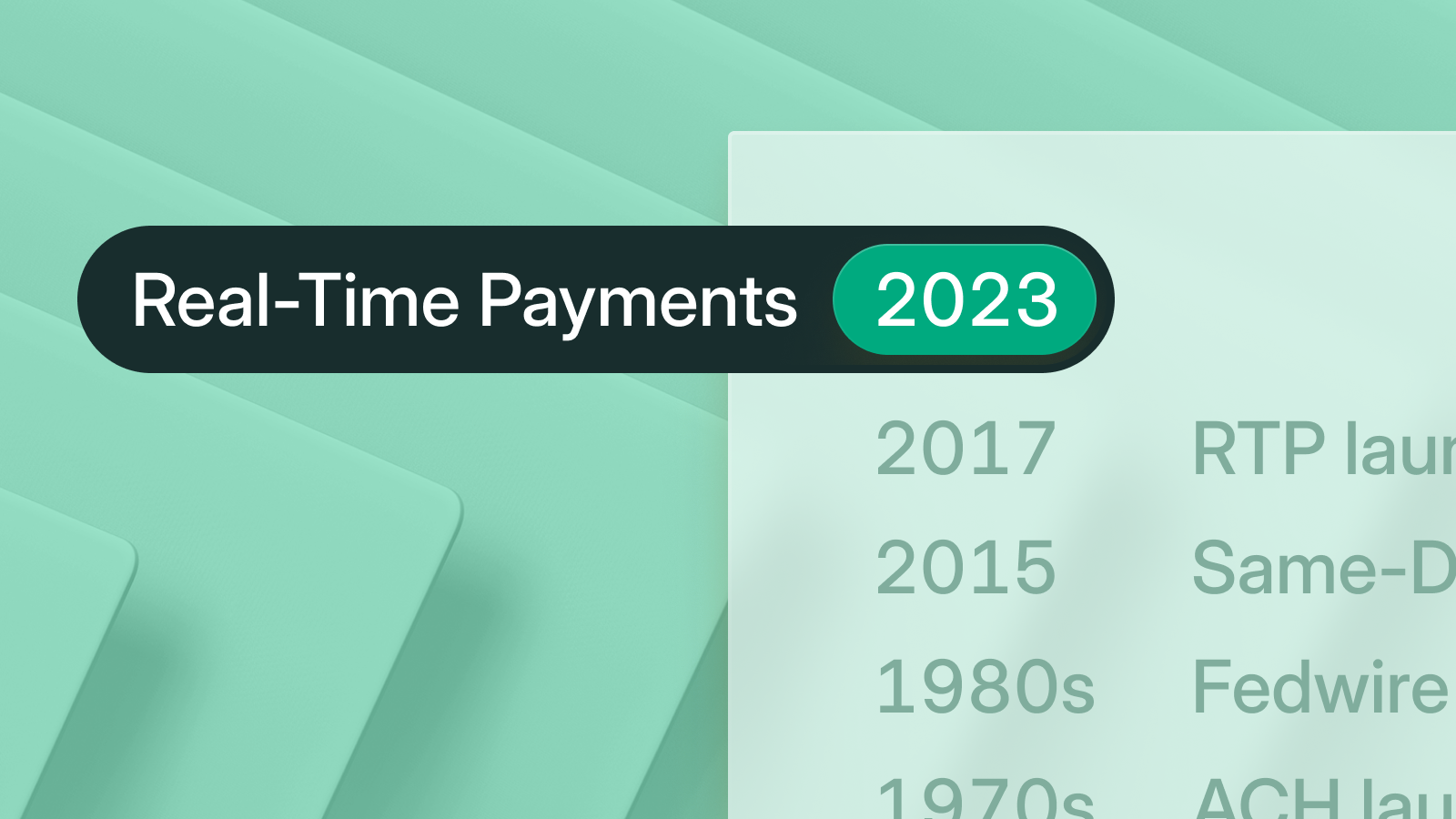Transfer 2024
Beyond Payments
A day dedicated to insights from industry leaders and discusson on trends shaping the future of payments and beyond.
Wednesday, May 15
San Francisco & Virtual
Move, Track, and Reconcile Money in Real-Time
Automatic reconciliation, faster payments, and real-time financial data, assisted by AI.













Essential Infrastructure for the New Era of Payments
Real-Time Reconciliation
Get to 100% reconciled with a granular matching engine, AI-powered exception handling, and a system that learns over time.
One API for All Your Banks
Integrate with 40+ banks. Implement RTP and FedNow, and orchestrate payments across North America, Europe, the UK, and Australia.

A Central Source of Truth
Manage transactions and balances in a performant database. Unify your financial data and make sense of it with AI.
Enterprise-Grade Security
Support for RBAC, SSO, SCIM, and SIEM. SOC I, SOC II, and PCI DSS compliant.
Seamless Connectivity
Start faster with pre-built integrations and flexible methods to ingest data via UI and API.
Modular Architecture
Modernize your entire infrastructure, or solve specific pain points, at your pace.
Robust Controls
Granular, conditional, and sequenced approvals for payments and reconciliation.
Payments Transformation is Business Transformation
Whether your business is new to hyperscale or a generational company, Modern Treasury is the partner of choice to advance in the new era of payments.

Navan reimagined expense management

C2FO increased revenue by entering the flow of funds

DriveWealth unlocked real-time reconciliation
AI That Puts You In Control
From controlled AI suggestions to granular permissions, Modern Treasury has everything enterprises need to confidently manage money at scale.

Expertise That Cuts Through Complexity
Reach your goals by collaborating with our expert team to implement faster, unlock new use cases, and scale efficiently.

Resources for payments and finance leaders everywhere
See more in our Knowledge Hub
Payments primers, industry trends, and resources to help leaders navigate modern payments.
Try Modern Treasury and experience the future of money movement.
Subscribe to Journal updates
Discover product features and get primers on the payments industry.



